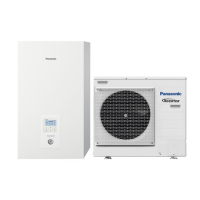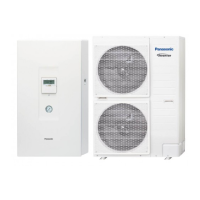Why does my Panasonic WH-UD05JE5 Heat Pump outdoor unit emit water or steam?
- WwalkermarySep 2, 2025
The water or steam emitted from the outdoor unit of your Panasonic Heat Pump is due to condensation or evaporation occurring in the pipes.

Why does my Panasonic WH-UD05JE5 Heat Pump outdoor unit emit water or steam?
The water or steam emitted from the outdoor unit of your Panasonic Heat Pump is due to condensation or evaporation occurring in the pipes.
Why does the backup heater turn on automatically on my Panasonic Heat Pump?
If the backup heater in your Panasonic Heat Pump turns on automatically when disabled, it is due to the protection control of the indoor unit heat exchanger.
Why is there a delay when restarting my Panasonic WH-UD05JE5?
A delayed start after restarting your Panasonic Heat Pump is a protection mechanism for the compressor.
Why does my Panasonic Water Heater system not heat up instantly?
The system will take some time to heat up the water if it starts to operate at cold water temperature.
What to do if the Panasonic Water Heater is not working efficiently in HEAT/COOL mode?
To improve efficiency, ensure the temperature is set correctly, close the panel heater/cooler valve, and clear any obstructions in the air inlet and outlet vents of the outdoor unit.
Why does my Panasonic Heat Pump not heat up instantly?
If your Panasonic Heat Pump doesn't heat up instantly, it's because the system needs time to heat the water, especially when starting with cold water.
Why does my Panasonic Heat Pump system switch off automatically?
If your Panasonic Heat Pump system switches off, it's due to the system's protection control. Specifically, the compressor stops and the backup heater activates when the water inlet temperature drops below 10 °C.
General safety warnings and precautions for indoor and outdoor units.
Precautions related to electrical power supply and connections.
Safety guidelines for handling and operating the remote controller.
Specific safety measures and precautions for systems using R32 refrigerant.
Guidelines for installation space and safe handling of refrigerants.
Requirements for service personnel and safe servicing procedures.
Safety checks and controlled procedures for working on refrigerant systems.
Procedures for checking refrigerant presence and handling potential leaks.
Ensuring availability of appropriate fire extinguishing equipment.
Measures to prevent ignition sources when working with refrigerants.
Ensuring adequate ventilation for safe operation and maintenance.
Checks for refrigerating equipment, including electrical components and piping.
Safety checks for electrical devices during repair and maintenance.
Precautions and procedures for repairing sealed components.
Guidelines for working on intrinsically safe components with flammable atmospheres.
Methods for detecting flammable refrigerant leaks and avoiding ignition sources.
Details on acceptable leak detection methods and their sensitivity requirements.
Procedures for safe removal and evacuation of refrigerant from the system.
Precautions and steps for charging refrigerant into the system.
Steps for safe decommissioning, including refrigerant recovery and system isolation.
Best practices for recovering refrigerant for servicing or decommissioning.
Addresses issues like system heating, outdoor unit operation, and refrigerant noise.
Explanation of RC-Indoor communication errors (e.g., H76).
Comprehensive list of error codes and their explanations for system troubleshooting.












